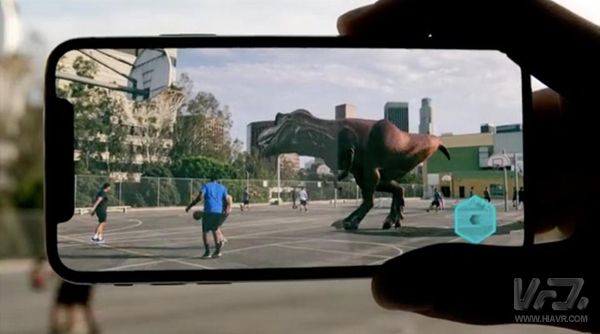Forbes: AR's future will be defined by Apple instead of Google or Facebook
At the Apple Developers Conference of the Year in June, there was a new tool that seemed to attract developers' attention more than any other product or tool launched that day. The tool is called ARKit and developers can use it to develop augmented reality (AR) applications that overlay digital objects into the real world. Apple has released new iPhones in the early hours of Beijing time today - iPhone 8, iPhone 8 Plus and iPhone X. It now provides the best hardware and software platform for developing AR applications.

Although ARKit will support older phones such as the iPhone 6s, AR apps appear to shine on the latest Apple hardware. iPhone 8 and 8 Plus use Apple's latest chip A11 Bionic, which has a six-core CPU (including two high-performance cores and four efficient cores), Apple's first custom GPU and image signal processor. The CPU core will process the tracking data, the ISP will perform real-time lighting evaluations, and the GPU will generate digital images.
For the AR hardware, the more important possibility is the iPhone X, which is Apple's most high-end device. The iPhone X also uses the A11 chip, which is also a processor dedicated to neural network computing. The neural network model should more accurately track the human face and the surrounding world to create a more attractive AR experience.
Google, Microsoft and Facebook all compete for the AR developer platform. Google has tried to launch its own hardware platform Project Tango, a depth-aware camera system for third-party handset manufacturers. Only two cell phone manufacturers (ASUS and Lenovo) used Tango technology, but their final cell phones were poorly understood. Tango did not receive developer support. Now, Google is also trying to develop an ARKit similar to Apple, which is ARCore for Android devices. But just like other things in the Android ecosystem, Google has a hard time controlling the hardware. Only Google Pixel and Samsung Galaxy S8 will support ARCore at the time of sale.
Apple's AR efforts look very cool, but remember that just because something looks cool, it's not a good thing in the future, it must also perform well to be truly successful. Taking the augmented reality game Pokémon GO as an example, it is largely regarded as a game that proves that "AR can break into mainstream". But for those who have been playing this game for the past year, the truth is much more complicated. Although this game has been successful, it is mainly based on navigation components rather than its AR components, like walking on the map to capture Pokémon, fighting and making raids.

However, Pokemon GO's real AR components are not always used, most enthusiastic players will actively turn off the AR function, because when you use your camera to project Pokémon on the sidewalk or grass, although it is cute or very good, However, it actually hinders the fun of the game. Pokémon's floating range is too big and you have to reposition yourself in certain situations to make sure they stay in place. In contrast, when you turn off the AR function, no matter what your phone is doing, you can set Pokémon in the center of the screen. For important captures, turning on the AR function is a disaster.
The point is that although Pokémon GO is considered a perfect example of AR (at least until the launch of ARKit), when it is used, this technology is trying hard to block the core of the game. So when it was called the "breakthrough" moment of AR, I (Paul Tassi, Forbes columnist) felt a little strange. In fact, it is just a function of the real-time map, and AR will hinder the game in some cases. This trend of placing technology on the gaming experience may further develop, and I think this is at least part of the reason why VR has recently been slower in the mainstream market.
In addition to the high cost, there are many games that are more involved, simpler, and more intuitive to play on a game console or PC, but worse in a VR environment. Attempting to port traditional games directly into virtual reality games is a very tricky problem because many core game systems are bound to be greatly constrained by technology. This is not to say that there is no great VR game, but there are also many people who think that due to technical needs, they have not even reached the level of ordinary Xbox or PlayStation games.
Before being abandoned by Microsoft, Xbox Kinect was considered the "core" of the Xbox One console. But when Microsoft realized that playing Kinect games seemed to be far less fun than traditional video games using standard controllers, it immediately abandoned what had previously been said. I am not saying that this is all about fighting against progress, but I do think that in order to pursue the future of technology, we tend to compete for the pursuit of the future. There are many such things, such as motion control, VR, AR and other technologies that feel like the future, but I am concerned that using it too early in order to succeed may end up affecting its mass popularity.
Apple ARKit impressed me, but after Pokemon GO's test, I know how to use it correctly and make sure it can become something that really enhances the game experience, rather than simply playing cool games.
Valve-regulated Sealed Lead Acid Battery
Long Time Life Battery,Uninterruptible Power System,Thin Plate Technology Battery,Sealed Lead Acid Battery
Wolong Electric Group Zhejiang Dengta Power Source Co.,Ltd , https://www.wldtbattery.com